The tablet does not dissolve in the dishwasher - what to do?
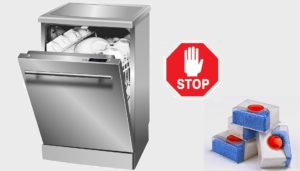 Detergent tablets are gradually replacing powders and gels and this is not surprising. A modern washing tablet contains everything you need to wash dishes; there is no need to bother purchasing several products. But problems may arise when using tablets.
Detergent tablets are gradually replacing powders and gels and this is not surprising. A modern washing tablet contains everything you need to wash dishes; there is no need to bother purchasing several products. But problems may arise when using tablets.
The dishwasher user begins to realize this when the quality of dishwashing deteriorates sharply and the tablet does not dissolve. Why does the tablet not want to dissolve? We will try to answer this question within the framework of the article.
Why does the machine take pills poorly?
In order not to beat around the bush, let's immediately understand the question of why the machine does not dissolve tablets well. In this case, we mean not only almost complete or partial dissolution, but also those cases when the tablet remains dry, when even the shell does not dissolve, despite the fact that the full washing cycle has been completed. So, what are the reasons that the dishwasher does not dissolve tablets well, why does this happen?
- The dispenser does not work. In modern dishwashers, the detergent cuvette is quite complex; there is a compartment for powder, gel, rinse aid and, of course, for tablets. The tablet compartment has a special valve that may become clogged and not work, or may not work due to improperly placed dishes. In this case, the tablet will barely get wet.
- Poor quality tablets. The tablet contains several components, so the manufacturer placed it in special packaging.If the packaging is damaged and stored somewhere in a damp place, then over time the detergent will become unusable, absorb moisture and harden. The same can happen if the seller stored the cleaning tablets incorrectly and then decided to discount them at a promotional price.
- The tablets are not dishwasher safe. This can also happen, for example, if you use ultra-modern detergent tablets in an old dishwasher. In such a machine, the washing program simply cannot dissolve the product correctly and it partially remains in the cuvette.
- User error. Often the dishwasher user himself sets the wrong washing program, and then blames it on the fact that he has faulty equipment. You need to carefully read the instructions for using the tablets; perhaps you are simply putting them in incorrectly, although it is quite difficult to make a mistake in this matter, but it is worth checking. In general, any means must be chosen and used correctly, this is written in detail in the article Natural and safe dishwashing detergents.
- Problems with water pressure. In this case, we are not necessarily talking about some kind of stupidity, like “you forgot to open the tap and therefore the tablet does not dissolve.” Everything could be simpler and more banal - the flow filter, which is placed after the shut-off hose, becomes clogged over time, and the machine cannot draw water normally. With all this, the machine may not generate an error and continue the washing cycle with insufficient water. This leads to the fact that the tablet does not dissolve.
Here is a basic list of reasons why the dishwasher refuses to dissolve the detergent tablet.If we consider all known optional cases (taking into account the dishwasher model), then we can add 5-7 more reasons. But in general, the above situations should be considered first; in 95% of cases, one of them is yours.
Important! Before trying a new automatic dishwashing detergent, carefully read the instructions for your dishwasher!
What are tablets made of, their types, what are their purposes?
A modern washing tablet is a universal product designed to provide high-quality dishwashing without the use of any additional chemicals. When the tablet completely dissolves, you will get perfectly clean dishes. The tasks and functions of the washing tablet will depend on its type and composition, so first we will focus our attention on this issue.
What are modern washing tablets? The first dishwashing tablets, which are still very popular today, contain only one component - detergent powder. Such a tablet is a powder pressed into a briquette. Now new tablets have become widespread:
- 3 in 1;

- 4 in 1;
- 5 in 1;
- 6 in 1;
- 7 in 1;
- 10 in 1;
- all in one.
A 3-in-1 tablet combines detergent, special salt and rinse aid, which should dissolve last. In addition to the basic components, the 4 in 1 tablets contain a substance to protect glass and ceramic dishes. 5 in 1 contain substances that remove scale from parts of the dishwasher. 6 in 1 additionally contain very good substances that carefully remove even ancient layers of carbon deposits from metal frying pans, pots and other utensils.
Multicomponent capsules 7 in 1, 10 in 1, all in one also include flavorings, antiseptics, products that remove narrow-profile stains, such as old stains from food coloring, coffee, egg white, and the like. It turns out that if the tablet contains 3 components, it solves 3 problems: washing dishes, maintaining the ion exchanger and rinsing dishes so that there are no stains on them. If a tablet has 4 components, it solves 4 problems and so on.
For your information! As a rule, the more components a detergent tablet contains, the more expensive it is, but there are exceptions to this rule.
If the dishwasher correctly recognizes the detergent tablet, it should gradually completely dissolve it over the entire wash cycle. The more components the tablet contains, the more difficult the dissolution process. For example, the most popular 3 in 1 tablets dissolve in the dishwasher like this:
- First, the tablet package dissolves (if it is self-soluble);
- then the salt gradually begins to dissolve and it dissolves throughout the entire washing cycle;
- then the detergent begins to dissolve, which also dissolves throughout the cycle;
- At the rinsing stage, the middle of the tablet dissolves, it removes powder stains and stains from the dishes.
What should I do to make the tablets dissolve?
We still have one question left unclear: how to make the tablets dissolve normally in the dishwasher? To answer this, experts give us a whole list of recommendations. If you follow these recommendations, then in most cases there will be no problems with the tablets.
- Carefully read the instructions for your dishwasher and determine exactly what products it can recognize.
- Also carefully read the instructions for specific tablets. It may contain valuable information from the manufacturer about the nuances of placing tablets in the dishwasher cuvette.
- Clean your dishwasher regularly to remove scale and other contaminants. Particular attention should be paid to the detergent dispenser; it should be cleaned, rinsed, and wiped dry or allowed to dry. Do not place tablets in a wet cuvette.
- Do not forget to clean the flow filter and generally ensure that water flows freely into the dishwasher.
- Use only high quality tablets. Do not buy tablets with damaged packaging or expired dates. Also, you shouldn’t take products from an unverified manufacturer - you’ll save on tablets and then buy a new dishwasher.
- Arrange the dishes correctly, choose the right washing program and everything will be fine.
In conclusion, we note that modern multi-component tablets were specially developed to make our lives easier. They cost a lot, so it becomes very unpleasant when you find out that a good half of the tablet refused to dissolve and remained in the cuvette. We need to immediately find the cause of the problem and eliminate it, and specialists will help us in this matter.
Interesting:
3 reader comments
Add a comment Cancel reply
Categories
Washing machine repair


For buyers

For users

Dishwasher

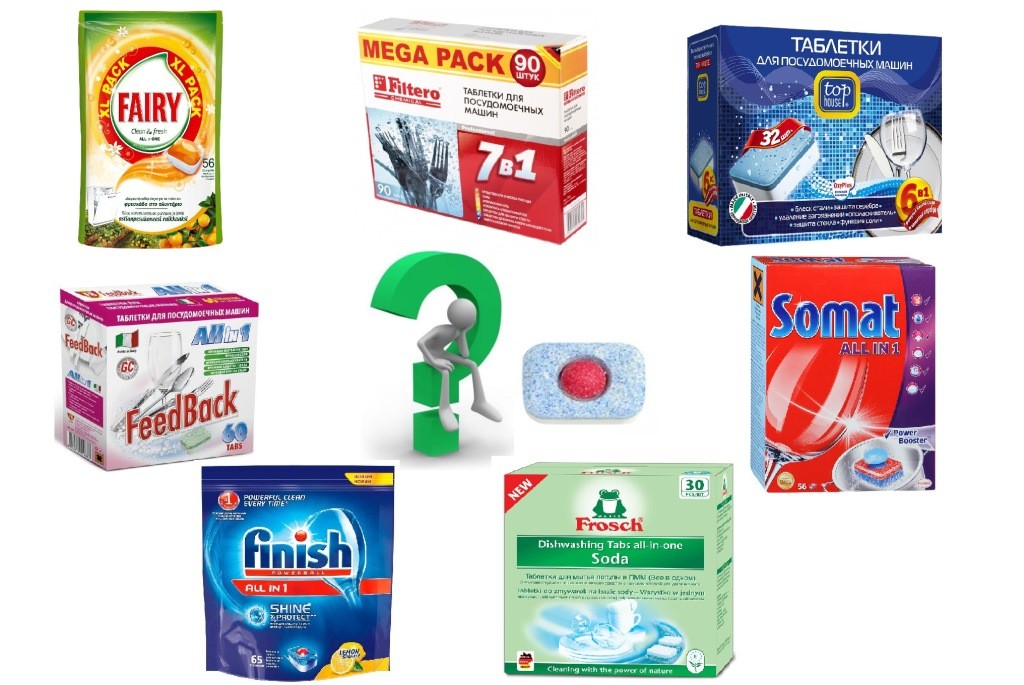

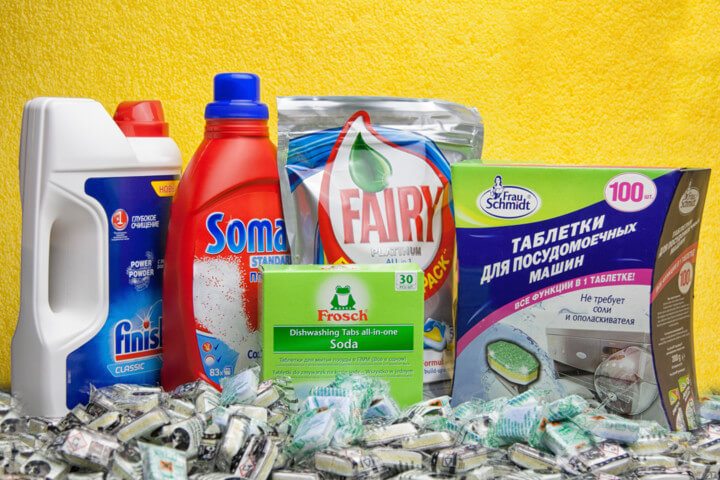
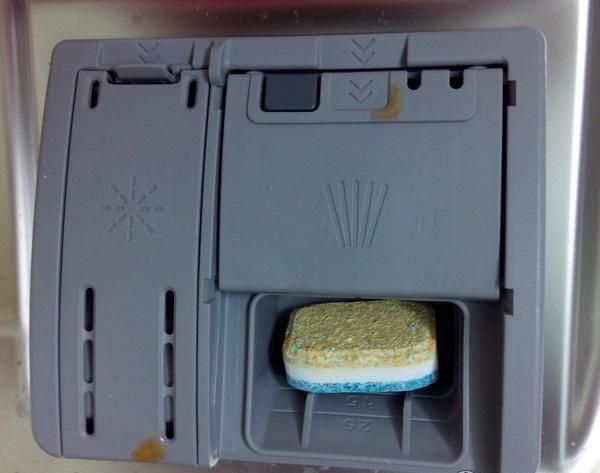

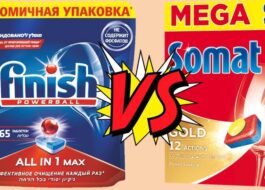










Tablets do not dissolve well. The bottom filter is clogged with fat deposits.
Thank you. Brief and to the point.
At the end of the wash, the tablet simply lies on the bottom of the PMM chamber. Who can say why this happens? Previous tablets from the same package dissolved well.